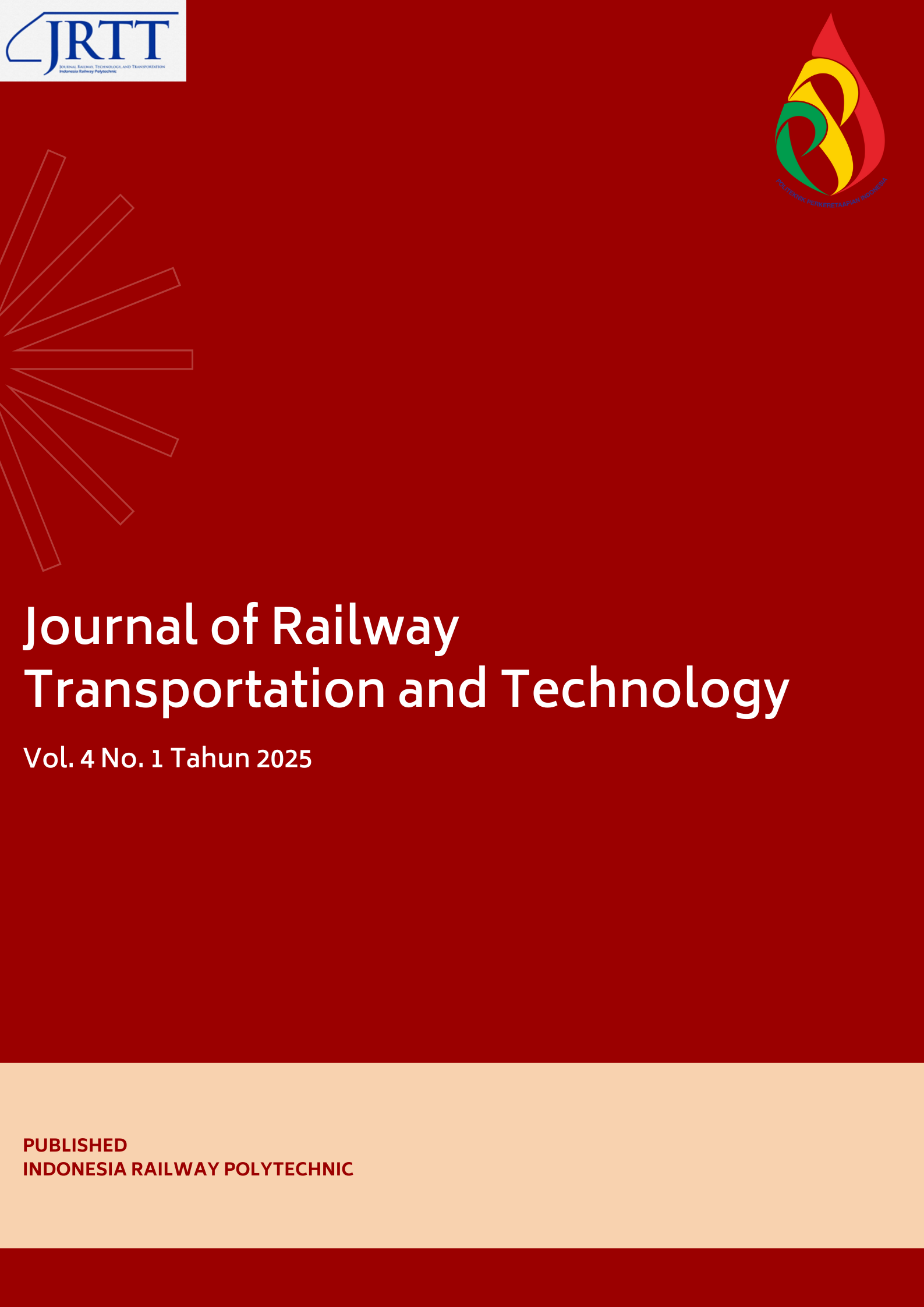Analysis of the Effectiveness of Silicon Carbide Usage in the Jakarta Metro Traction System Using Matlab
DOI:
https://doi.org/10.37367/jrtt.v4i1.59Keywords:
IGBT, SiC, EMU, inverter, matlabAbstract
Switching inverter technology for converting DC to AC using Insulated Gate Bipolar Transistors (IGBTs) has been implemented in the propulsion system of the Jakarta Metro. However, with advancements in power electronics, a newer technology—Silicon Carbide (SiC)—has emerged, offering the potential to reduce switching power losses by up to 30%. The effectiveness of this technology can be evaluated through simulations using MATLAB Simulink, enabling an assessment of its potential application in the Jakarta Metro system. By quantifying this efficiency gain, informed strategic decisions can be made regarding the adoption of SiC technology for DC to AC conversion, whether through the replacement of existing IGBT-based inverters or during the procurement of rolling stock for future phases.
The evaluation will be conducted by simulating both existing IGBT parameters and proposed SiC device parameters under current traction motor operating conditions. This simulation aims to determine the output power required to drive the traction motor while maintaining alignment with the current train configuration. A comparative analysis of efficiency between the two technologies will form the basis of this thesis, providing insights into the feasibility and benefits of transitioning to SiC-based inverters for the Jakarta Metro.
References
Sumitomo Corporation, “05 Maintenance Manual Chapter 5 - Propulsion System (Rev C) NONO,” vol. 5, Aug. 2019.
Sumitomo Corporation, “10 TDR for Propulsion (Rev. L) NONO,” Feb. 2019.
Y. Zhu, M. Xiao, X. Su, G. Yang, K. Lu, and Z. Wu, “Modeling of conduction and switching losses for IGBT and FWD based on SVPWM in automobile electric drives,” Applied Sciences (Switzerland), vol. 10, no. 13, Jul. 2020, doi: 10.3390/app10134539.
Friedolin Hasian Tampubolon, “UNIVERSITAS INDONESIA,” 2010.
A. Elasser and T. P. Chow, “Silicon carbide benefits and advantages for power electronics circuits and systems,” 2002, Institute of Electrical and Electronics Engineers Inc. doi: 10.1109/JPROC.2002.1021562.
K. Hamada et al., 3.3 kV/1500 A Power Modules for the World’s First All-SiC Traction Inverter. 2014. doi: 10.7567/SSDM.2014.E-4-4L.
S. Bernet, “Recent developments of high power converters for industry and traction applications,” IEEE Trans Power Electron, vol. 15, no. 6, pp. 1102–1117, Nov. 2000, doi: 10.1109/63.892825.
A. K. Tiwari, “Enhancing Metro Train Systems: A Comprehensive Analysis Of Regeneration Systems And Technological Advancements For Improved Energy Efficiency,” vol. 19, no. 1, pp. 16–26, 2024, doi: 10.9790/0853-1902011626.
Downloads
Published
How to Cite
Issue
Section
License
Copyright (c) 2025 Mohamad Angger Pamungkas Wijaya, Chairul Gagarin Irianto, Teguh Arifianto

This work is licensed under a Creative Commons Attribution-ShareAlike 4.0 International License.









